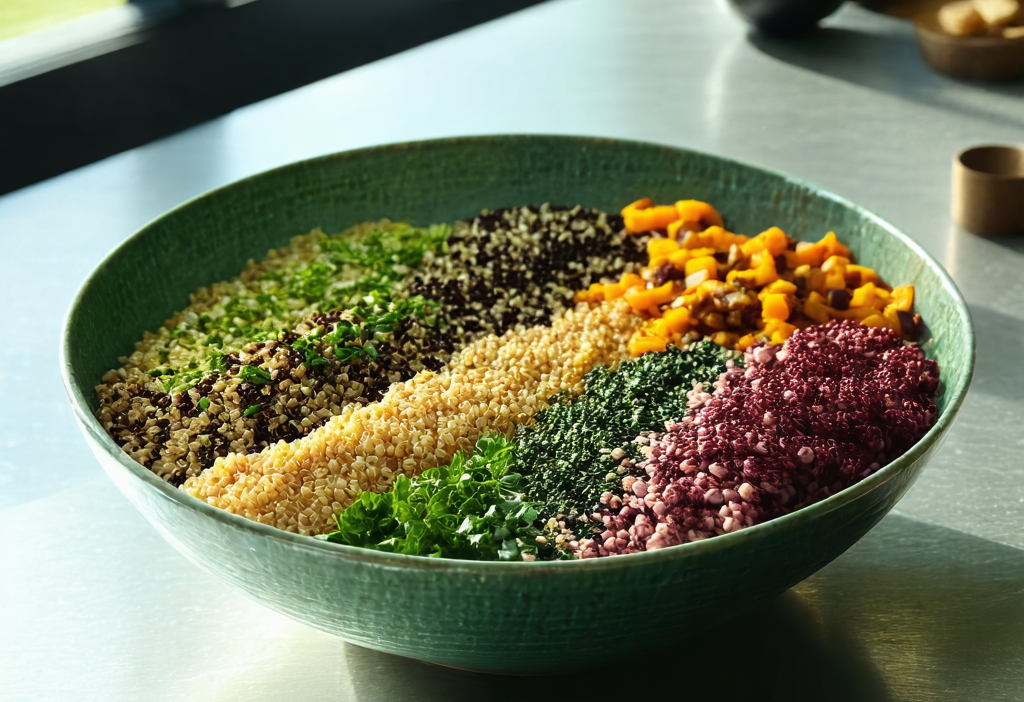Ancient Grains: The Timeless Nutrition of the Future
In a world where modern diets often prioritize convenience over nutrition, ancient grains offer a fascinating alternative. These forgotten staples are making a comeback, thanks to their exceptional health benefits and unique flavors. Whether you’re a food enthusiast or someone looking to improve your diet, understanding the role of ancient grains in modern nutrition is essential. Let’s dive into the history, benefits, and culinary potential of these nutrient-rich foods.
What Are Ancient Grains?
Ancient grains are varieties that have remained largely unchanged for centuries. Unlike modern hybrids, they haven’t been genetically modified or selectively bred to enhance specific traits like yield or shelf life. Examples include quinoa, farro, amaranth, and millet. These grains have been staples in traditional diets across the globe, providing sustenance for generations before industrial agriculture took over.
The History of Ancient Grains
Before rice, wheat, and corn became dominant crops, ancient grains were at the heart of many cultures. For instance:
- Quinoa was a sacred crop in the Andes, known as ‘the mother grain.’
- Farro was a staple in ancient Rome, used by soldiers for its energy-boosting properties.
- Amaranth was central to Aztec and Inca diets, symbolizing both nutrition and culture.
Despite their historical significance, many of these grains fell out of favor during the agricultural revolution. However, recent interest in sustainable and nutrient-dense foods has brought them back into the spotlight.
Nutritional Powerhouses
Ancient grains are celebrated for their rich nutritional profiles:
- Higher Protein Content: Many ancient grains, such as quinoa and amaranth, contain all nine essential amino acids, making them complete proteins.
- Rich in Fiber: They’re an excellent source of dietary fiber, promoting gut health and aiding digestion.
- Vitamins and Minerals: Packed with nutrients like iron, magnesium, and B vitamins, they support overall well-being.
According to the World Health Organization, incorporating diverse grains into your diet can significantly improve nutritional outcomes, especially in regions where staple crops dominate.
Culinary Versatility
Ancient grains aren’t just for health enthusiasts; they’re incredibly versatile in the kitchen. Here are some creative ways to incorporate them:
- Salads: Use cooked quinoa or farro as a base for grain bowls, adding roasted vegetables and fresh herbs.
- Soups and Stews: Add texture and depth to soups by including amaranth or millet.
- Baking: Substitute refined flour with ancient grain flours in breads, pancakes, and pastries for a nutty flavor and added nutrients.
Chefs around the world are rediscovering these grains, integrating them into modern dishes that blend tradition with innovation. For inspiration, check out Food Network’s collection of ancient grain recipes.
Ancient Grains and Sustainability
Beyond nutrition, ancient grains offer environmental benefits. They:
- Require Less Water: Many varieties are drought-resistant, making them ideal for water-scarce regions.
- Promote Biodiversity: Growing a variety of grains reduces reliance on monocultures, enhancing ecosystem resilience.
- Support Small-Scale Farmers: Many ancient grain producers are small-scale farmers who benefit from the growing demand for niche products.
Organizations like World Resources Institute advocate for ancient grains as a sustainable alternative to resource-intensive crops like rice and corn.
Tips for Incorporating Ancient Grains into Your Diet
If you’re new to cooking with ancient grains, here are some tips:
- Start Simple: Begin with quinoa or farro, as they’re widely available and easy to prepare.
- Experiment: Try different grain combinations in salads, side dishes, and main courses.
- Pair with Flavors You Love: Ancient grains pair well with bold spices and fresh ingredients, so don’t be afraid to get creative.
Storage Tips
To maintain the freshness and nutrients of ancient grains, store them properly:
- Keep Dry: Store in an airtight container in a cool, dark place.
- Grind as Needed: Whole grain flours can oxidize and lose nutrients over time, so grind small batches fresh.
The Future of Ancient Grains
As awareness grows about the benefits of ancient grains, their popularity is likely to continue rising. This resurgence isn’t just a trend; it’s a return to traditional wisdom that values nutrition, sustainability, and flavor.
Ancient grains remind us that sometimes, looking backward can lead us forward. By embracing these time-tested foods, we’re not only enhancing our diets but also contributing to a more sustainable food system. So why not give them a try? Your taste buds—and your health—will thank you.
For more insights into sustainable eating and nutritional trends, follow Healthline.





